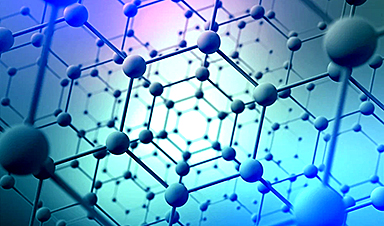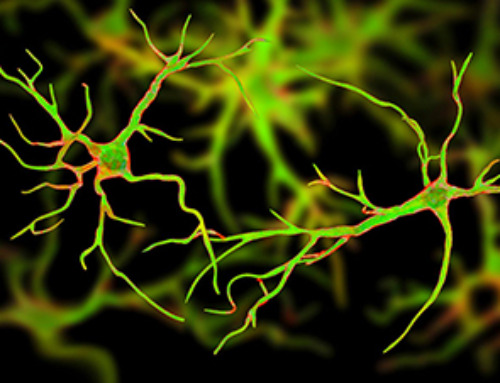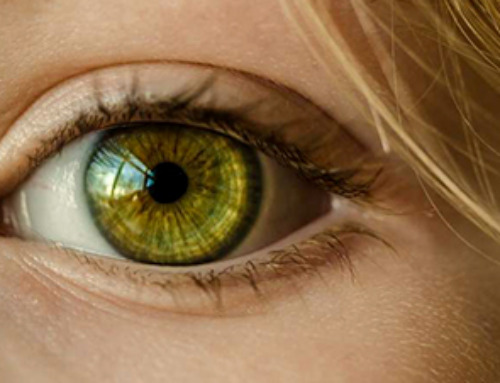Electronic and photonic devices have unique functionalities for converting chemical and biological processes into electrical or optical signals to detect, identify, and monitor these processes. Integrating nanotechnology concepts has led to various innovative optoelectronic designs that empower next-generation devices.
Deoxyribonucleic acid (DNA) is the molecule that stores and transmits genetic information in biological systems. These molecules are versatile substrates for chemical modification and functionalization, facilitating the attachment of nanocargoes at predetermined locations. DNA nanostructures have been used as templates for the fabrication of inorganic structures.
Although DNA molecules are promising building blocks for nanostructures, DNA-based optical or electronic devices have not yet been commercialized. A recent article published in Bioconjugate Chemistry discussed the potential applications of DNA nanotechnology in electronics and photonics through four case studies: quantum computing devices, carbon nanotube transistors, enzymatic fuel cells, and artificial electromagnetic materials.
DNA Nanotechnology and its Application in Nanofabrication
DNA nanotechnology has widened the applications of DNA molecules by applying them to assemble and connect structural motifs. These molecules have contributed extensively to the fields of nanoscience and nanotechnology and have revolutionized molecular self-assembly. DNA nanotechnology offers superior programmability to realize accurate self-assembly in three-dimensional (3D) structures and has evolved sufficiently to be commercialized.
In addition to its applications in engineering and physics, DNA nanotechnology has been exploited in biomedicine. DNA molecules tethered to nanocargoes or nanosurfaces have been frequently reported as highly functionalized nanoscale platforms.
In photonics and electronics, nanometer-scale platforms are fabricated using either top-down or bottom-up methods. Top-down approaches (such as electron beam lithography and photolithography) can produce sub-100 nanometers geometries with features of 20 nanometers. However, the inability to offer such characteristics on a centimeter scale at the same speed and affordability substantially restrict their applicability.
Alternatively, the application of DNA nanotechnology for nanofabrication enables the construction of 3D platforms via a combination of chemical reactions and nanoscale shapes, with scope for modulation. The present study sheds light on DNA nanotechnology involving processes through four case studies that have contributed immensely to photonic and electronic applications.
Quantum computing
A qubit is the simplest quantum system that enables information processing in quantum computers in radically different ways. Hence, qubit-based quantum computers are faster than classical computers and require a supporting component to stabilize and manipulate qubits. Although qubit-based quantum computers with silicon hardware have been hypothesized to be more advantageous than classical computers, their realization is challenging.
Few quantum information processing systems use Josephson junctions to create qubits. In this regard, DNA nanostructures can be used to assemble 3D arrays of Josephson junctions, which is otherwise unattainable using conventional methods, indicating the scope of DNA nanotechnology in fabricating quantum computing hardware.
Carbon nanotube (CNT) transistors
Structural DNA nanotechnology utilizes DNA molecules as programmable information-coding polymers to create high-order structures at the nanometer scale. For example, in DNA origami tiles, a long single-stranded viral genome (scaffold strand) is folded into arbitrary shapes using hundreds of short synthetic oligonucleotides (staple strands).
Previous studies have shown that templated metallization uses DNA origami tile as a substrate to fabricate interconnects in circuits. Additionally, DNA origami can be used as a template for conducting metal-semiconductor junctions, yielding complex metal nanostructures.
Furthermore, DNA origami tiles have also been used to arrange organic materials and polymers in curved patterns, which is beneficial for technologies such as wearable devices for health monitoring or bendable smartphones that require flexible electronic circuitry.
Enzymatic fuel cells or biobatteries
DNA nanotechnology has great potential for developing enzymatic fuel cells, wherein DNA-based hydrogels can be used as the medium.
DNA origami structures and hydrogels enable facile assembly under environmentally benign conditions compared with conventional devices that use dangerous materials. As scope for the future, researchers anticipate developing DNA hydrogel biobatteries with enhanced power density, energy, and longevity, by refining the electron transfer pathway and scrutinizing suitable enzymes/substrates.
Artificial electromagnetic material
DNA nanotechnology has several applications in the field of photonics. Nanocavities are used in quantum optical studies to confine light using subwavelength-scaled resonating modes. They require emitters to be placed at accurate positions. Gopinath et al. demonstrated that dye molecules targeted at different locations on a DNA structure within a photonic crystal cavity (PCC) enabled tunable emission based on the electric-field intensity of the PCC.
Another study by Kuzyk et al. used DNA nanorods as a substrate to link a gold nanosphere-based helical string to induce a chiroptical response. The left- and right-handed helices generated bisignate circular dichroism spectra.
Conclusion
Overall, a problem-driven approach, wherein the design of the device is guided by thorough knowledge of the demands of the target market and device specifications, would ease the translation of DNA nanotechnology research to the mark of commercialization. This approach could help to develop new innovative designs based on DNA nanotechnology that could be applied in photonics and electronics. Coupling it with efficient methods for scaling up at lower costs can be an additional advantage.
News
Multifunctional Nanogels: A Breakthrough in Antibacterial Strategies
Antibiotic resistance is a growing concern - from human health to crop survival. A new study successfully uses nanogels to target and almost entirely inhibit the bacteria P. Aeruginosa. Recently published in Angewandte Chemie, the study [...]
Nanoflowers rejuvenate old and damaged human cells by replacing their mitochondria
Biomedical researchers at Texas A&M University may have discovered a way to stop or even reverse the decline of cellular energy production—a finding that could have revolutionary effects across medicine. Dr. Akhilesh K. Gaharwar [...]
The Stunning New Push to Protect the Invisible 99% of Life
Scientists worldwide have joined forces to build the first-ever roadmap for conserving Earth’s vast invisible majority—microbes. Their new IUCN Specialist Group reframes conservation by elevating microbial life to the same urgency as plants and [...]
Scientists Find a Way to Help the Brain Clear Alzheimer’s Plaques Naturally
Scientists have discovered that the brain may have a built-in way to fight Alzheimer’s. By activating a protein called Sox9, researchers were able to switch on star-shaped brain cells known as astrocytes and turn them into [...]
Vision can be rebooted in adults with amblyopia, study suggests
Temporarily anesthetizing the retina briefly reverts the activity of the visual system to that observed in early development and enables growth of responses to the amblyopic eye, new research shows. In the common vision [...]
Ultrasound-activated Nanoparticles Kill Liver Cancer and Activate Immune System
A new ultrasound-guided nanotherapy wipes out liver tumors while training the immune system to keep them from coming back. The study, published in Nano Today, introduces a biodegradable nanoparticle system that combines sonodynamic therapy and cell [...]
Magnetic nanoparticles that successfully navigate complex blood vessels may be ready for clinical trials
Every year, 12 million people worldwide suffer a stroke; many die or are permanently impaired. Currently, drugs are administered to dissolve the thrombus that blocks the blood vessel. These drugs spread throughout the entire [...]
Reviving Exhausted T Cells Sparks Powerful Cancer Tumor Elimination
Scientists have discovered how tumors secretly drain the energy from T cells—the immune system’s main cancer fighters—and how blocking that process can bring them back to life. The team found that cancer cells use [...]
Very low LDL-cholesterol correlates to fewer heart problems after stroke
Brigham and Women's Hospital's TIMI Study Group reports that in patients with prior ischemic stroke, very low achieved LDL-cholesterol correlated with fewer major adverse cardiovascular events and fewer recurrent strokes, without an apparent increase [...]
“Great Unified Microscope” Reveals Hidden Micro and Nano Worlds Inside Living Cells
University of Tokyo researchers have created a powerful new microscope that captures both forward- and back-scattered light at once, letting scientists see everything from large cell structures to tiny nanoscale particles in a single shot. Researchers [...]
Breakthrough Alzheimer’s Drug Has a Hidden Problem
Researchers in Japan found that although the Alzheimer’s drug lecanemab successfully removes amyloid plaques from the brain, it does not restore the brain’s waste-clearing system within the first few months of treatment. The study suggests that [...]
Concerning New Research Reveals Colon Cancer Is Skyrocketing in Adults Under 50
Colorectal cancer is striking younger adults at alarming rates, driven by lifestyle and genetic factors. Colorectal cancer (CRC) develops when abnormal cells grow uncontrollably in the colon or rectum, forming tumors that can eventually [...]
Scientists Discover a Natural, Non-Addictive Way To Block Pain That Could Replace Opioids
Scientists have discovered that the body can naturally dull pain through its own localized “benzodiazepine-like” peptides. A groundbreaking study led by a University of Leeds scientist has unveiled new insights into how the body manages pain, [...]
GLP-1 Drugs Like Ozempic Work, but New Research Reveals a Major Catch
Three new Cochrane reviews find evidence that GLP-1 drugs lead to clinically meaningful weight loss, though industry-funded studies raise concerns. Three new reviews from Cochrane have found that GLP-1 medications can lead to significant [...]
How a Palm-Sized Laser Could Change Medicine and Manufacturing
Researchers have developed an innovative and versatile system designed for a new generation of short-pulse lasers. Lasers that produce extremely short bursts of light are known for their remarkable precision, making them indispensable tools [...]
New nanoparticles stimulate the immune system to attack ovarian tumors
Cancer immunotherapy, which uses drugs that stimulate the body’s immune cells to attack tumors, is a promising approach to treating many types of cancer. However, it doesn’t work well for some tumors, including ovarian [...]





















